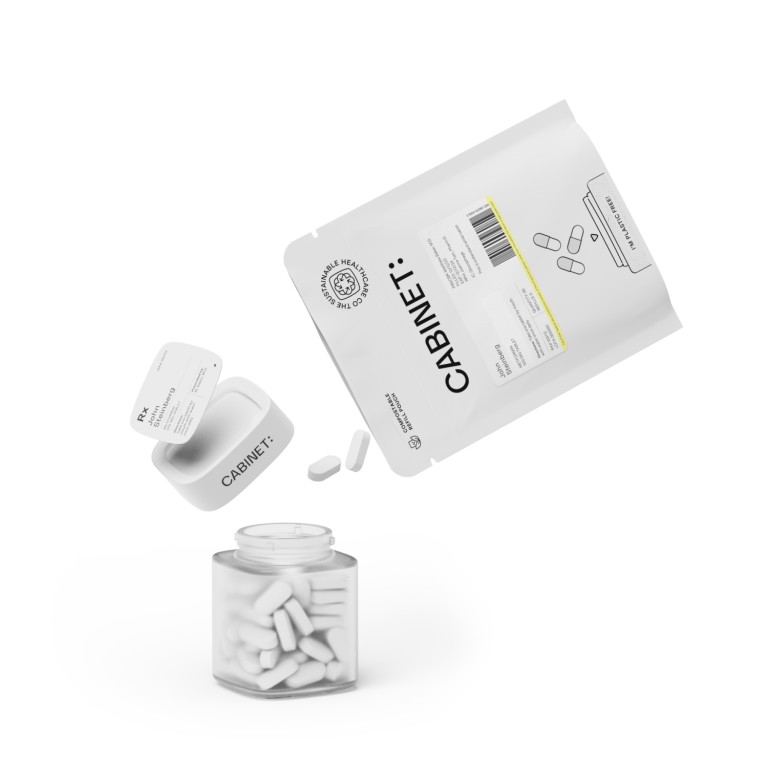For individuals prescribed with methylprednisolone, it is important to understand the medication, the prescription process, and how to properly refill and manage your medication. In this article, we will explore all these aspects to ensure that you are well-informed and empowered to take control of your healthcare.
Understanding Methylprednisolone
Methylprednisolone is a corticosteroid medication that is commonly prescribed to reduce inflammation in the body. It works by suppressing the immune system, thereby alleviating symptoms of various conditions such as allergic reactions, asthma, arthritis, and certain skin conditions.
When it comes to managing inflammation, methylprednisolone is a trusted ally. By mimicking the effects of cortisol, a hormone naturally produced by the adrenal glands, this synthetic glucocorticoid hormone helps regulate the body's immune response. This can be particularly beneficial in cases where the immune system is overactive or causing harm.
Available in different forms, including tablets, injections, and topical creams, methylprednisolone offers flexibility in treatment options. Tablets are commonly prescribed for long-term use, while injections may be administered for immediate relief or in more severe cases. Topical creams, on the other hand, are often used to target specific areas of the body, providing localized relief.
What is Methylprednisolone?
Methylprednisolone is a synthetic glucocorticoid hormone that imitates the effects of cortisol, a hormone naturally produced by the adrenal glands. It is a versatile medication that can be used to manage a variety of conditions. By closely resembling cortisol, methylprednisolone is able to interact with the body's cells and regulate the immune response, ultimately reducing inflammation and alleviating symptoms.
While cortisol is produced in response to stress, methylprednisolone can be prescribed to help manage chronic conditions where inflammation is a persistent issue. By providing the body with an external source of cortisol-like hormones, methylprednisolone helps restore balance and relieve discomfort.
Uses of Methylprednisolone
Methylprednisolone is prescribed for a wide range of medical conditions. Some of the common uses include:
Relieving inflammation associated with allergic reactions
Managing asthma and other respiratory conditions
Treating rheumatoid arthritis and other autoimmune disorders
Controlling symptoms of inflammatory bowel disease
Alleviating pain and inflammation in musculoskeletal conditions
These are just a few examples of the many ways methylprednisolone can be utilized in medical treatment. Its versatility and effectiveness make it a valuable tool in the hands of healthcare professionals.
Side Effects and Precautions
Like any medication, methylprednisolone may have potential side effects. Common side effects include increased appetite, difficulty sleeping, and changes in mood. However, more serious side effects such as weight gain, high blood pressure, and increased risk of infection can occur with long-term use or higher doses.
It is important to note that the benefits of methylprednisolone often outweigh the potential risks. However, it is crucial to follow your healthcare provider's instructions closely and report any concerns you may have. Regular check-ups and open communication with your healthcare team can help ensure that the medication is being used safely and effectively.
Additionally, it is important to be aware of any potential drug interactions or contraindications. Certain medications or medical conditions may affect how methylprednisolone is metabolized or its effectiveness. Always inform your healthcare provider about any other medications you are taking or any underlying health conditions you may have.
Remember, methylprednisolone is a powerful medication that should be used under the guidance of a healthcare professional. By working together with your healthcare team, you can maximize the benefits of this medication while minimizing any potential risks.
The Prescription Process
Obtaining a methylprednisolone prescription requires a visit to a healthcare provider. Here is a general overview of the prescription process:
How to Get a Methylprednisolone Prescription
To get a methylprednisolone prescription, you will need to schedule an appointment with a qualified healthcare provider. During the visit, your healthcare provider will assess your symptoms, medical history, and other relevant factors to determine if methylprednisolone is a suitable treatment option for you. If prescribed, your healthcare provider will provide you with a prescription and instructions on how to take the medication.
Reading Your Prescription Label
When you receive your methylprednisolone prescription, it is important to carefully read and understand the information provided on the prescription label. The label will include details such as the dosage, frequency of administration, and any additional instructions or precautions you need to follow while taking the medication. If you have any questions or concerns, do not hesitate to consult your healthcare provider or pharmacist for clarification.
Refilling Your Prescription
As you continue your treatment, it is essential to ensure a seamless refill process for your methylprednisolone prescription:
When to Refill Your Methylprednisolone Prescription
Knowing when to refill your methylprednisolone prescription is crucial to avoid any disruption in your treatment. It is advisable to refill your prescription before you run out of medication. It is always better to be prepared and allow for any unexpected delays.
Steps to Refill Your Prescription
Refilling your methylprednisolone prescription can be done by following a few simple steps:
Contact your pharmacy: Reach out to your preferred pharmacy and let them know that you need to refill your methylprednisolone prescription.
Provide necessary information: Your pharmacy will require certain details such as your name, prescription number, and contact information to initiate the refill process.
Wait for confirmation: Once your pharmacy receives the request, they will confirm the availability of your medication and provide you with an estimated time for pickup or delivery.
Pick up or receive your medication: When your medication is ready, you can either visit the pharmacy to collect it or have it delivered to your doorstep, depending on the services offered by your pharmacy.
Managing Your Medication
Properly managing your methylprednisolone medication is important for optimal treatment outcomes:
Storing Methylprednisolone Properly
When it comes to storing methylprednisolone, it is crucial to follow the instructions provided by your healthcare provider and the pharmacist. Generally, methylprednisolone should be stored at room temperature, away from direct sunlight and moisture. Avoid storing it in the bathroom or near the kitchen sink.
What to Do If You Miss a Dose
If you miss a dose of methylprednisolone, it is important to take it as soon as you remember. However, if it is close to the time of your next scheduled dose, skip the missed dose and continue with your regular dosing schedule. Do not double the dose to make up for the missed one.
Interactions and Contraindications
Understanding potential interactions and contraindications is vital to ensure the safe and effective use of methylprednisolone:
Drug Interactions with Methylprednisolone
It is important to inform your healthcare provider about all the medications you are taking, including over-the-counter drugs and dietary supplements. Certain medications, such as anticoagulants, immunosuppressants, and certain antifungal medications, may interact with methylprednisolone and affect its effectiveness or increase the risk of side effects.
Contraindications for Methylprednisolone Use
Methylprednisolone may not be suitable for everyone. Your healthcare provider will consider various factors such as your medical history, current medications, and allergies to determine if methylprednisolone is contraindicated for you. It is important to inform your healthcare provider of any known allergies or pre-existing medical conditions before starting methylprednisolone treatment.
By understanding methylprednisolone, the prescription process, and proper medication management, you can ensure a smooth and successful experience when refilling your prescription. Remember to consult your healthcare provider or pharmacist if you have any concerns or questions throughout your treatment. Taking an active role in your healthcare journey is key to optimizing your well-being.








